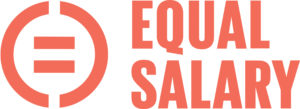After the pandemic related challenges faced within the last 12 months, it would be easy to assume that the appetite for more challenges is fairly low.
This is not the case.
The theme of this year’s International Women’s Day on 8th March 2021 is #ChooseToChallenge. It is a rallying cry highlighting that everyone has a role to play to “forge a gender equal world”.
A collective approach aims to bring about rapid change in gender equality but it should not be confined to just one day. Choosing to challenge consistently, especially in the workplace, is a must if gender parity is to be achieved.
According to the Global Gender Pay Gap Report 2020, it will take another 100 years to achieve gender equality. The rate of progress is slow. Only on publication of the 2021 Report will we see just how much of an impact Covid-19 has had.
The general feeling is that the gap has become significantly wider as a disproportionate number of women have ‘moved out of paid work’ since the pandemic started. This is highlighted in a report by the Institute of Fiscal Studies, which also says that “of those who were in paid work prior to the lockdown, mothers are 47% more likely than fathers to have permanently lost their job or quit.”
As Government and corporate agendas focus on the aftermath of Covid-19, the issue of gender inequality is at risk of being downgraded. This makes #ChooseToChallenge all the more important as we cannot rely solely on decision-makers to drive the issue; everyone has their part to play.
Choose to challenge
Choosing to challenge gender inequality is a deliberate strategy through which a collective approach has the potential to make a real impact in the workplace. Despite the efforts of leading organisations that implement inclusive practices, gender bias is still a common battle for many women.
An article by MIT Sloan suggests three ways in which women can work to tackle gender bias in a constructive and consistent way in the workplace:
- Highlight instances of gender bias as and when they arise, whether it is a quiet word with a colleague who may have displayed unconscious bias or reporting cases to line managers.
- Put yourself front and centre of the meeting room rather than skirting around the edges. Managing how others see you will increase their recognition of the real value that you bring.
- Find an ally and become an ally. Find yourself a work partner who will amplify your comments and suggestions in meetings. Through amplification, your contribution will be more widely recognised.
But of course, it is not just up to women to support each other. Male colleagues also have their part to play.
There are many ways to tackle bias from the male viewpoint. One of the most powerful would be to openly question bias behaviour against a female colleague, in real time.
Asking perpetrators of gender bias whether they would have the same reaction if a man did the same thing not only calls out the behaviour but gives everyone the opportunity to challenge their ingrained viewpoints.
As a male leader, effective mentoring and being vocal in giving women the credit they deserve are vastly important. Ensuring that everyone has been given the opportunity to speak up in meetings and fair distribution on who clears up after meetings are gestures that will slowly erode gender bias.
Leaders should also focus on how to drive the agenda forward. According to Sage Advice, “companies in the top quartile for gender diversity are 15% more likely to outperform their competitors financially.” So by eliminating bias, not only does the company take steps to attract and keep top talent, it gains financial reward and builds a stronger reputation.
HR leaders are pivotal in ensuring that the agenda for an unbiased workplace is realised. This is a multi-faceted approach. It means that organisations must be alert to how their own recruitment processes can enable bias, and they must empower their leaders to support and mentor women into more senior roles.
——————————
A key strategy in achieving true gender equality is to take deliberate steps to close the gender pay gap. Not only is this the right thing to do but it will benefit organisations through increased staff retention, and morale.
The EQUAL-SALARY certification enables organisations to demonstrate that they pay their female and male employees equally for the same job, or for a job of the same value. EQUAL-SALARY is open to all industries in all countries.
If you want to get EQUAL-SALARY certified, join the cause, become an ambassador or would just like to learn more, please get in touch.



